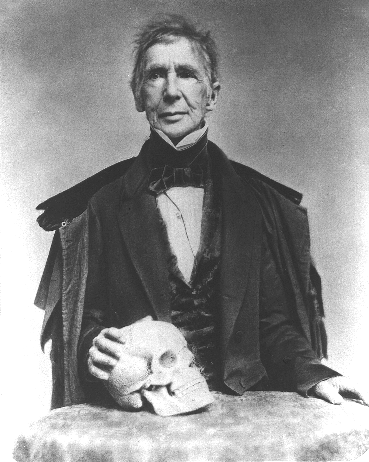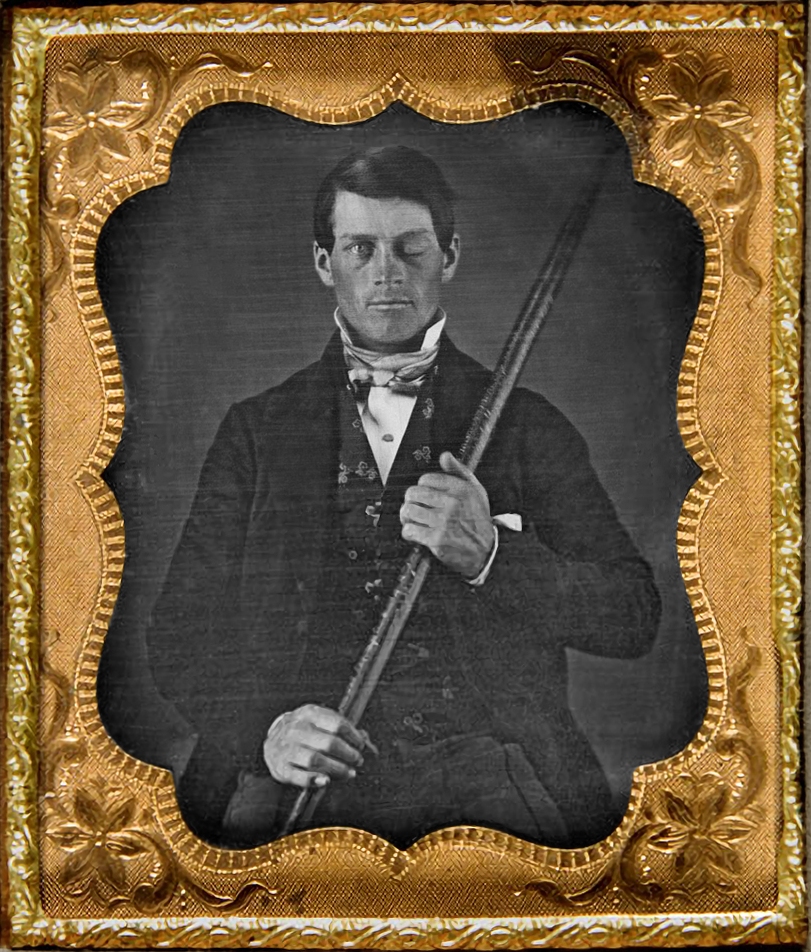|
John Collins Warren (surgeon, Born 1778)
John Collins Warren (August 1, 1778 – May 4, 1856) was an American surgeon. He was a founder of the ''New England Journal of Medicine'' and was the third president of the American Medical Association. He was the first Dean of Harvard Medical School and a founding member of the Massachusetts General Hospital. In 1846 he gave permission to William T.G. Morton to provide ether anesthesia while Warren performed a minor surgical procedure. News of this first public demonstration of surgical anesthesia quickly circulated around the world. Biography Born in Boston, he was the son of John Warren, well-known doctor, Harvard professor, and a founder of the Harvard Medical School and the nephew of Dr. Joseph Warren. While attending Harvard College, he co-founded the Hasty Pudding Club in 1795. He graduated in 1797, then began the study of medicine with his father. In 1799, he continued his medical studies in London and Paris and Edinburgh, including work with the pioneer anatomist Sir ... [...More Info...] [...Related Items...] OR: [Wikipedia] [Google] [Baidu] |
Boston
Boston (), officially the City of Boston, is the capital city, state capital and List of municipalities in Massachusetts, most populous city of the Commonwealth (U.S. state), Commonwealth of Massachusetts, as well as the cultural and financial center of the New England region of the United States. It is the 24th-List of United States cities by population, most populous city in the country. The city boundaries encompass an area of about and a population of 675,647 2020 U.S. Census, as of 2020. It is the seat of Suffolk County, Massachusetts, Suffolk County (although the county government was disbanded on July 1, 1999). The city is the economic and cultural anchor of a substantially larger metropolitan area known as Greater Boston, a metropolitan statistical area (MSA) home to a census-estimated 4.8 million people in 2016 and ranking as the tenth-largest MSA in the country. A broader combined statistical area (CSA), generally corresponding to the commuting area and includ ... [...More Info...] [...Related Items...] OR: [Wikipedia] [Google] [Baidu] |
Edinburgh
Edinburgh ( ; gd, Dùn Èideann ) is the capital city of Scotland and one of its 32 Council areas of Scotland, council areas. Historically part of the county of Midlothian (interchangeably Edinburghshire before 1921), it is located in Lothian on the southern shore of the Firth of Forth. Edinburgh is Scotland's List of towns and cities in Scotland by population, second-most populous city, after Glasgow, and the List of cities in the United Kingdom, seventh-most populous city in the United Kingdom. Recognised as the capital of Scotland since at least the 15th century, Edinburgh is the seat of the Scottish Government, the Scottish Parliament and the Courts of Scotland, highest courts in Scotland. The city's Holyrood Palace, Palace of Holyroodhouse is the official residence of the Monarchy of the United Kingdom, British monarchy in Scotland. The city has long been a centre of education, particularly in the fields of medicine, Scots law, Scottish law, literature, philosophy, the sc ... [...More Info...] [...Related Items...] OR: [Wikipedia] [Google] [Baidu] |
Pericarditis
Pericarditis is inflammation of the pericardium, the fibrous sac surrounding the heart. Symptoms typically include sudden onset of sharp chest pain, which may also be felt in the shoulders, neck, or back. The pain is typically less severe when sitting up and more severe when lying down or breathing deeply. Other symptoms of pericarditis can include fever, weakness, palpitations, and shortness of breath. The onset of symptoms can occasionally be gradual rather than sudden. The cause of pericarditis often remains unknown but is believed to be most often due to a viral infection. Other causes include bacterial infections such as tuberculosis, uremic pericarditis, heart attack, cancer, autoimmune disorders, and chest trauma. Diagnosis is based on the presence of chest pain, a pericardial rub, specific electrocardiogram (ECG) changes, and fluid around the heart. A heart attack may produce similar symptoms to pericarditis. Treatment in most cases is with NSAIDs and possibly t ... [...More Info...] [...Related Items...] OR: [Wikipedia] [Google] [Baidu] |
Thomas Dwight
Thomas Dwight (1843–1911) was an American physician, anatomist and teacher. Life Thomas Dwight was born on October 13, 1843, in Boston, Massachusetts. His father was also named Thomas Dwight (born September 27, 1807 – 1876 ), part of the New England Dwight family. His mother was Mary Collins Warren (b. Jan 19, 1816-Oct 22. 1900 ), whose father John Collins Warren (1778 –1856), and grandfather John Warren (1753–1815) were both surgeons. Dwight joined the Catholic Church in 1856, and graduated from the Harvard Medical School in 1867. After studying abroad, he was instructor in comparative anatomy at Harvard College, 1872–1873, he also lectured at Bowdoin College. He succeeded Oliver Wendell Holmes, Sr. as Parkman professor of anatomy at Harvard Medical School in 1883. In the Warren Museum of Anatomy at Harvard, Dwight arranged a section of osteology, considered one of the best in existence, and he had an international reputation as an anatomist. Among his writings are: " ... [...More Info...] [...Related Items...] OR: [Wikipedia] [Google] [Baidu] |
John Collins Warren Daguerreotype Circa 1855
John is a common English name and surname: * John (given name) * John (surname) John may also refer to: New Testament Works * Gospel of John, a title often shortened to John * First Epistle of John, often shortened to 1 John * Second Epistle of John, often shortened to 2 John * Third Epistle of John, often shortened to 3 John People * John the Baptist (died c. AD 30), regarded as a prophet and the forerunner of Jesus Christ * John the Apostle (lived c. AD 30), one of the twelve apostles of Jesus * John the Evangelist, assigned author of the Fourth Gospel, once identified with the Apostle * John of Patmos, also known as John the Divine or John the Revelator, the author of the Book of Revelation, once identified with the Apostle * John the Presbyter, a figure either identified with or distinguished from the Apostle, the Evangelist and John of Patmos Other people with the given name Religious figures * John, father of Andrew the Apostle and Saint Peter * Pope Joh ... [...More Info...] [...Related Items...] OR: [Wikipedia] [Google] [Baidu] |
Southworth & Hawes
Southworth & Hawes was an early photographic firm in Boston, 1843–1863. Its partners, Albert Sands Southworth (1811–1894) and Josiah Johnson Hawes (1808–1901), have been hailed as the first great American masters of photography, whose work elevated photographic portraits to the level of fine art. Their images are prominent in every major book and collection of early American photography. Southworth & Hawes worked almost exclusively in the daguerreotype process. Working in the 8 ½ x 6 ½ inch ''whole plate'' format, their images are brilliant, mirror-like, and finely detailed. Writing in the ''Photographic and Fine Art Journal'', August 1855, the contemporary Philadelphia daguerreotypist Marcus Aurelius Root paid them this praise: "Their style, indeed, is peculiar to themselves; presenting beautiful effects of light and shade, and giving depth and roundness together with a wonderful softness or mellowness. These traits have achieved for them a high reputation with all true a ... [...More Info...] [...Related Items...] OR: [Wikipedia] [Google] [Baidu] |
Horace Wells
Horace Wells (January 21, 1815 – January 24, 1848) was an American dentist who pioneered the use of anesthesia in dentistry, specifically the use of nitrous oxide (or laughing gas). Early life Wells was the first of three children of Horace and Betsy Heath Wells, born on January 21, 1815 in Hartford, Vermont. His parents were well-educated and affluent land owners, which allowed him to attend private schools in New Hampshire and Amherst, Massachusetts. At the age of 19 in 1834, Wells began studying dentistry under a two-year apprenticeship in Boston. The first dental school did not open until 1840 in Baltimore. At age 23, Wells published a booklet "An Essay on Teeth" in which he advocated for his ideas in preventive dentistry, particularly for the use of a toothbrush. In his booklet, he also described tooth development and oral diseases, where he mentioned diet, infection, and oral hygiene as important factors. After obtaining a degree, Wells set up a practice in Hart ... [...More Info...] [...Related Items...] OR: [Wikipedia] [Google] [Baidu] |
Southworth & Hawes - First Etherized Operation (re-enactment) – an early photographic firm in Boston.
{{disambiguation ...
Southworth may refer to: People * Southworth (surname) Places * Southworth, Ohio, an unincorporated community * Southworth, Washington – unincorporated community on Puget Sound in Kitsap County, Washington * Point Southworth – on Kitsap Peninsula on the western side of the northern entrance to Colvos Passage in Puget Sound * Southworth Creek, a stream in Oregon Others uses * Southworth & Hawes Southworth & Hawes was an early photographic firm in Boston, 1843–1863. Its partners, Albert Sands Southworth (1811–1894) and Josiah Johnson Hawes (1808–1901), have been hailed as the first great American masters of photography, whose work ... [...More Info...] [...Related Items...] OR: [Wikipedia] [Google] [Baidu] |
Warren Anatomical Museum
The Warren Anatomical Museum, housed within Harvard Medical School's Countway Library of Medicine, was founded in 1847 by Harvard professor John Collins Warren, whose personal collection of 160 unusual and instructive anatomical and pathological specimens now forms the nucleus of the museum's 15,000-item collection. The Warren also has objects significant to medical history, such as the inhaler used during the first public demonstration of ether-assisted surgery in 1846 (on loan to the Massachusetts General Hospital since 1948), and the skull of Phineas Gage, who survived a large iron bar being driven through his brain. The museum's first curator was J.B.S. Jackson. Closed until 2022 The museum gallery is closed for renovation until 2022, although the collection remains accessible to researchers by appointment. Normally a rotating subset of items, including Gage's skull and the tamping iron that passed through it, is on public display. __NOTOC__ See also * William Fiske Whitney ... [...More Info...] [...Related Items...] OR: [Wikipedia] [Google] [Baidu] |
Boston Society Of Natural History
The Boston Society of Natural History (1830–1948) in Boston, Massachusetts, was an organization dedicated to the study and promotion of natural history. It published a scholarly journal and established a museum. In its first few decades, the society occupied several successive locations in Boston's Financial District, including Pearl Street, Tremont Street and Mason Street. In 1864 it moved into a newly constructed museum building at 234 Berkeley Street in the Back Bay, designed by architect William Gibbons Preston. In 1951 the society evolved into the Museum of Science, and relocated to its current site on the Charles River. History Founders of the society in 1830 included Amos Binney Jr.; Edward Brooks; Walter Channing; Henry Codman; George B. Emerson; Joshua B. Flint; Benjamin D. Greene; Simon E. Greene; William Grigg; George Hayward; D. Humphreys Storer; and John Ware. Several had previously been involved with the Linnaean Society of New England. By 1838, the societ ... [...More Info...] [...Related Items...] OR: [Wikipedia] [Google] [Baidu] |
Cambridge, Massachusetts
Cambridge ( ) is a city in Middlesex County, Massachusetts, United States. As part of the Greater Boston, Boston metropolitan area, the cities population of the 2020 United States Census, 2020 U.S. census was 118,403, making it the fourth most populous city in the state, behind Boston, Massachusetts, Boston, Worcester, Massachusetts, Worcester, and Springfield, Massachusetts, Springfield. It is one of two de jure county seats of Middlesex County, although the county's executive government was abolished in 1997. Situated directly north of Boston, across the Charles River, it was named in honor of the University of Cambridge in England, once also an important center of the Puritan theology embraced by the town's founders. Harvard University, the Massachusetts Institute of Technology (MIT), Lesley University, and Hult International Business School are in Cambridge, as was Radcliffe College before it merged with Harvard. Kendall Square in Cambridge has been called "the most innovati ... [...More Info...] [...Related Items...] OR: [Wikipedia] [Google] [Baidu] |






